In a corner of the Dojo’s basement, a guitar leans propped up next to a snow shovel and broom, as if it’s a household tool. In another room, a medium-sized VHS collection sits in a wood shelf underneath a series of colorful paintings that line the wall. The wood-paneled basement bar looks like a ruin from a ’70s man cave, but supports a mixing board and mic equipment. These artifacts lie at the intersection of art and home and capture the lifestyle of Pilsen-based artists Mykele Deville, Daniel Kyri Madison, and Alex Palma. The three are residents of the Dojo, an underground performance venue and gallery in southwest Pilsen.
The group moved into their building complex in the summer of 2015. Having known each other through their involvement in Chicago’s DIY (“Do It Yourself”) music scene over the past five years, the artists wanted to create their own venue and began looking for a location. The Dojo, located in Pilsen, now hosts a few events a month, some of which can feature as many as thirty artists and musicians in one night.
The physical spaces in the Dojo hint at the dual nature of the venue: the compartmentalized space contains a living-room-slash-gallery, a bedroom-slash-installation-space, a backyard-slash-theatre, and a basement-slash-concert stage.
At the helm of this space sit the members of the Dojo board, who Kyri says “keep things running.” The board is currently made up of Deville, Kyri, and locals Selena Boyer, Samantha Hollis, Palma, and Emily Woods. They accept applications from local artists and community members interested in curating shows, and also serve as liaisons between the curators of the Dojo and the artists they host.
The board members all serve unique roles for different shows, though Kyri notes they’ve all been known to pull eight-hour shifts to help plan and set up events. Deville, for example, serves as the social facilitator of the Dojo, while Palma is responsible for tech. The Dojo also has a staff of “Dependable Homies” and a plethora of other volunteers.
Deville claims that the reason the Dojo has been successful so far is that the space expects accountability from its artists.
“It’s not any less professional than those pop-ups on 18th [Street],” he says. The shows take weeks of preparation and are meticulously organized, both thematically and spatially.
“We try to keep everything in house. People can’t just come in and bring their band and six other bands on the tickets.”
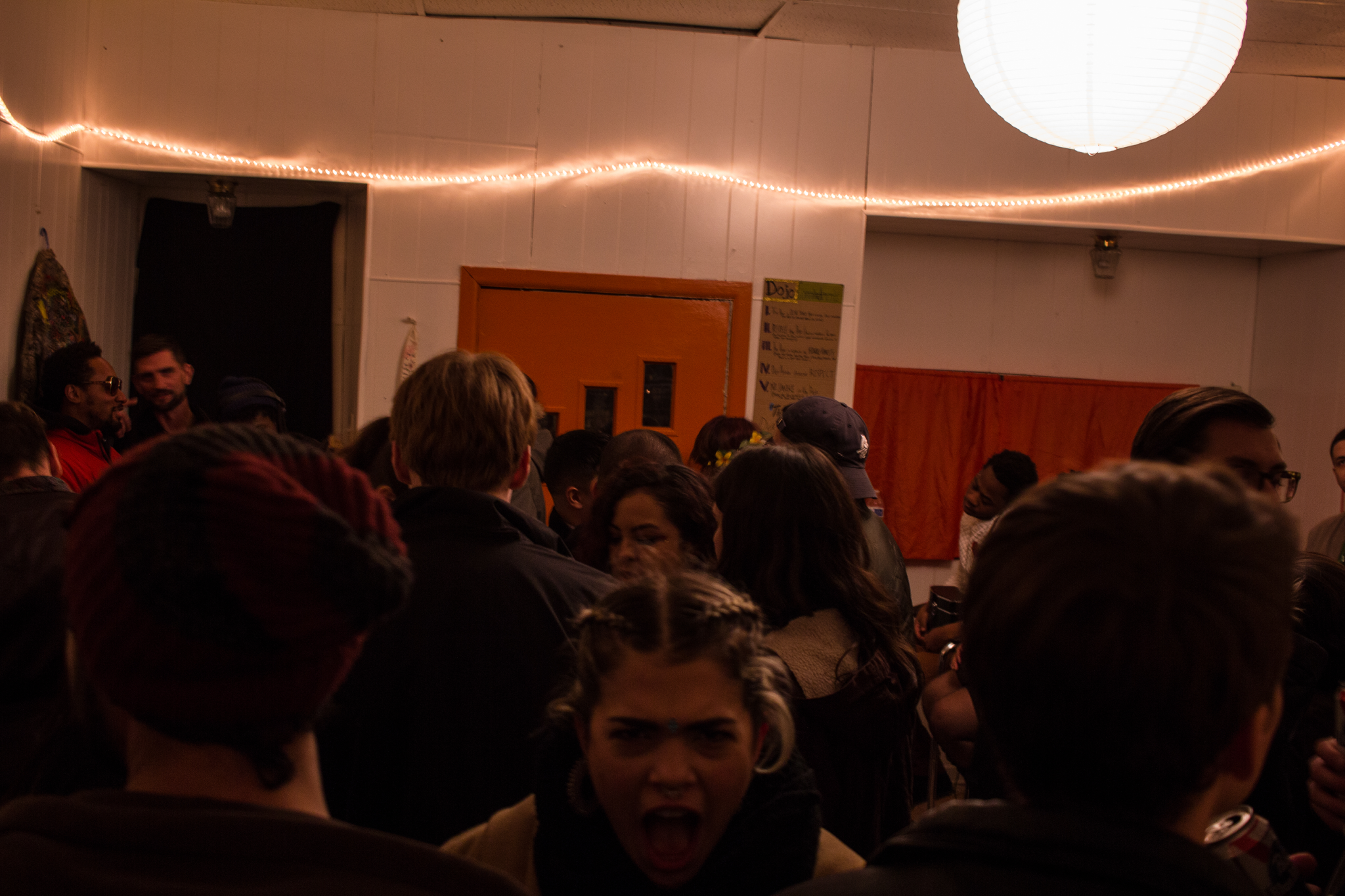
The shows themselves are incredibly diverse; past events have featured visual arts, zines, live painting, installations, theater, comedy, poetry, and music.
“We want to avoid some weird hierarchy,” says Deville, a nod to how many DIY spaces in the city prioritize music over other visual or performance arts.
At first impression, The Dojo exudes far more of a party atmosphere than the feel of a gallery; the rooms can get full of so many people that some of the artwork is obscured. At the last major Dojo event, an all-female-produced art event called “FEMI-NICE” on January 16, the curators had to squeeze a few large paintings into a small, poorly-lit room at the back of the house.
But local artists seem to appreciate this style of display. Muhammad Naqee, a painter and jewelry artist who was displaying a handful of his own works, believes the Dojo’s unique curation style creates an atmosphere superior to that of a traditional gallery. At the latter, “you have the older, rich white crowd,” Naqee says, “and they wanna come out for the scene and to be seen, as opposed to appreciating it, actually interacting with people, and just enjoying what’s happening.”
The more casual and social atmosphere of the Dojo events encourages participation by artists and art appreciators as opposed to art collectors. The art sits on the walls, behind a sea of people, but all the spectators are people who want to, and will, seek out engagement with the pieces and their makers. In the back room of “FEMI-NICE,” I stood and looked at a painting of an apple and a knife against a black background. A man made eye contact with me from across the room, and in a second appeared next to me. He shared some commentary on the painting, quickly assessed and compared the clothes of everyone in the room, and walked away.
Deville believes the Dojo’s style of “hyper attention” provides unique opportunities for artist promotion, but the Dojo’s high level of organization and preparedness can cause disagreements with artists accustomed to other venues or spaces.
“Sometimes the spirit of doing things in a specific way breeds this hyper attention and organization that a lot of DIY venues don’t want to do or believe is necessary,” says Deville, “because that’s not ‘the spirit of DIY.’”
He cited Presley Joy Paget, a painter and maker of wearable art, as a golden example of a Dojo success story. Paget arrived days early to work with the curators. She mounted her work in a way that complemented crowd flow, painted live during the events, and stuck around during the show, connecting with other artists and interested buyers.
“Mykele claimed a jacket straight away,” she said. “I then gave a pair of painted pants to Monet [a Dojo-affiliated artist], and then another to one of the bands and suddenly my art was floating through the space. This night started my engine for wearable art.”
Though Dojo curators do not charge or profit off the artists’ displays, they expect them to be prepared and professional.
“[Paget] set a precedent for artists,” said Deville. “We won’t take anything less.”
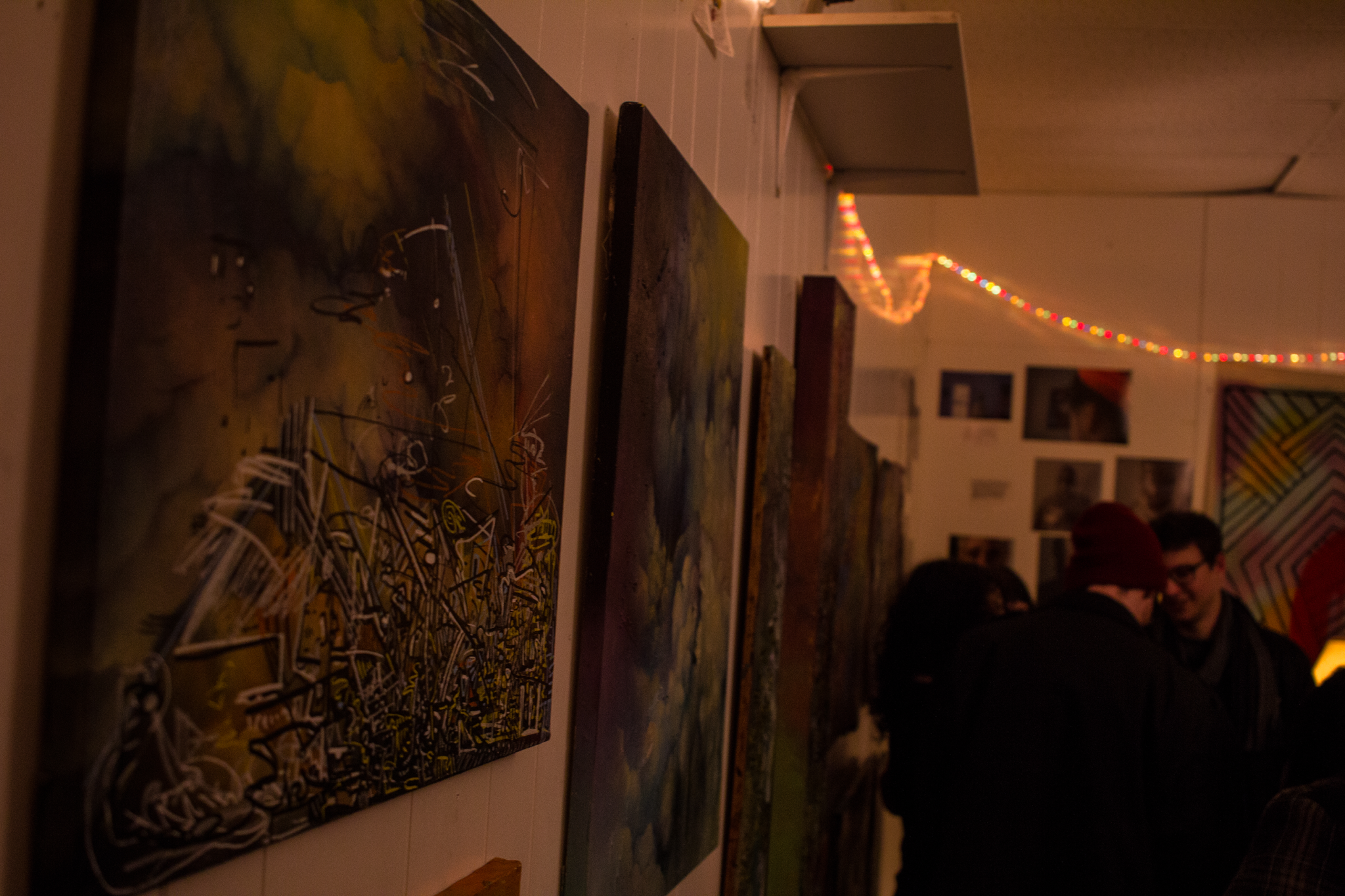
In addition to the respect and positivity that defines the Dojo’s curatorial relationships, Deville says the Dojo also aims to create a positive and healthy space in Chicago’s artistic community as well. “There is no defeat in this dojo” is a moniker plastered around the walls of the building and on its Facebook page, capturing the zero-tolerance policy the Dojo has for all discrimination. A few inches from the door, a handwritten cardboard sign hangs that lists rules for the Dojo event: the first is that it’s a designated safe space. Rules two and three mandate respect for the artists’ work and for the residents of the building.
During “FEMI-NICE,” these rules were on display. A few people in the basement audience started organizing the shorter spectators in the front, and the taller in the back. In these moments, the dancing and moshing typical of DIY basement shows would have felt out of place, but head bobbing and smiles were everywhere. People treated the space delicately: the floors weren’t sticky at the end of the night, and there was none of the typical “DIY grime” either.
“We’re about positivity, we’re about safe space, while [in] other places it’s more about coming in and having a good time, and then leaving,” Deville says. “Versus someone opening up their basement, we open up our whole house.”
At the major events themselves, artists seem to benefit and contribute to the Dojo’s signature atmosphere almost more than concertgoers: wandering about the space during FEMI-NICE, I had conversations with multiple artists about their own work and others’, while on the other hand, people who came for the music seemed more reserved. Still, while walking through the crowd I overheard a fan of the opening band exclaim, “This basement is filled with love.”
The creation of the Dojo, to a certain extent, was a response to the insularity Deville and Kyri experienced at other DIY venues throughout Chicago. Although niche communities are at the core of these spaces, the Dojo thought DIY could be more.
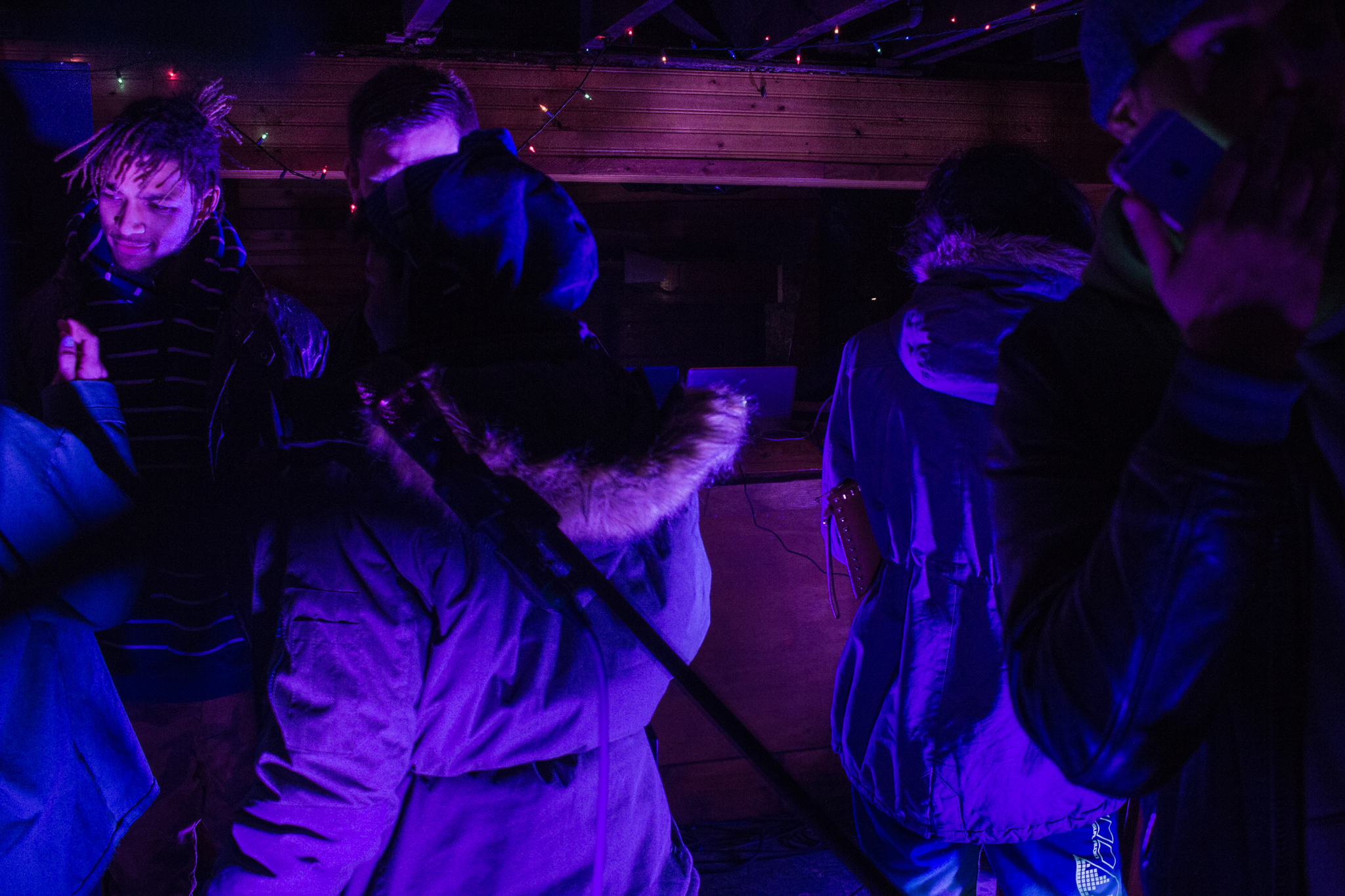
“In other DIY spaces, it’s like: my friend has a band that wants to play, and I know a couple other cool bands that I like and give them a space to play,” says Deville. “That system is great because it breeds loyalty, but it doesn’t do anything to expand the scene, make it more diverse and multicultural, or break down the walls of gender.”
Through its model of working through a diverse number of outside curators, the Dojo is able to fight insularity and draw from multiple crowds for each event. “We try and mix up the bill, so you’ll have a hip-hop artist with a rock artist with a country artist, whatever you can think of,” Deville says.
“Since the Dojo runs different shows each time, people can respond like ‘what is this, I wanted the hip-hop,’” he continues. “There’s always going to be distortion between these walls, but we are giving people options to see something new. Even if you don’t like experiencing new things, you’ll find the sector of the Dojo that you like and come to that.”
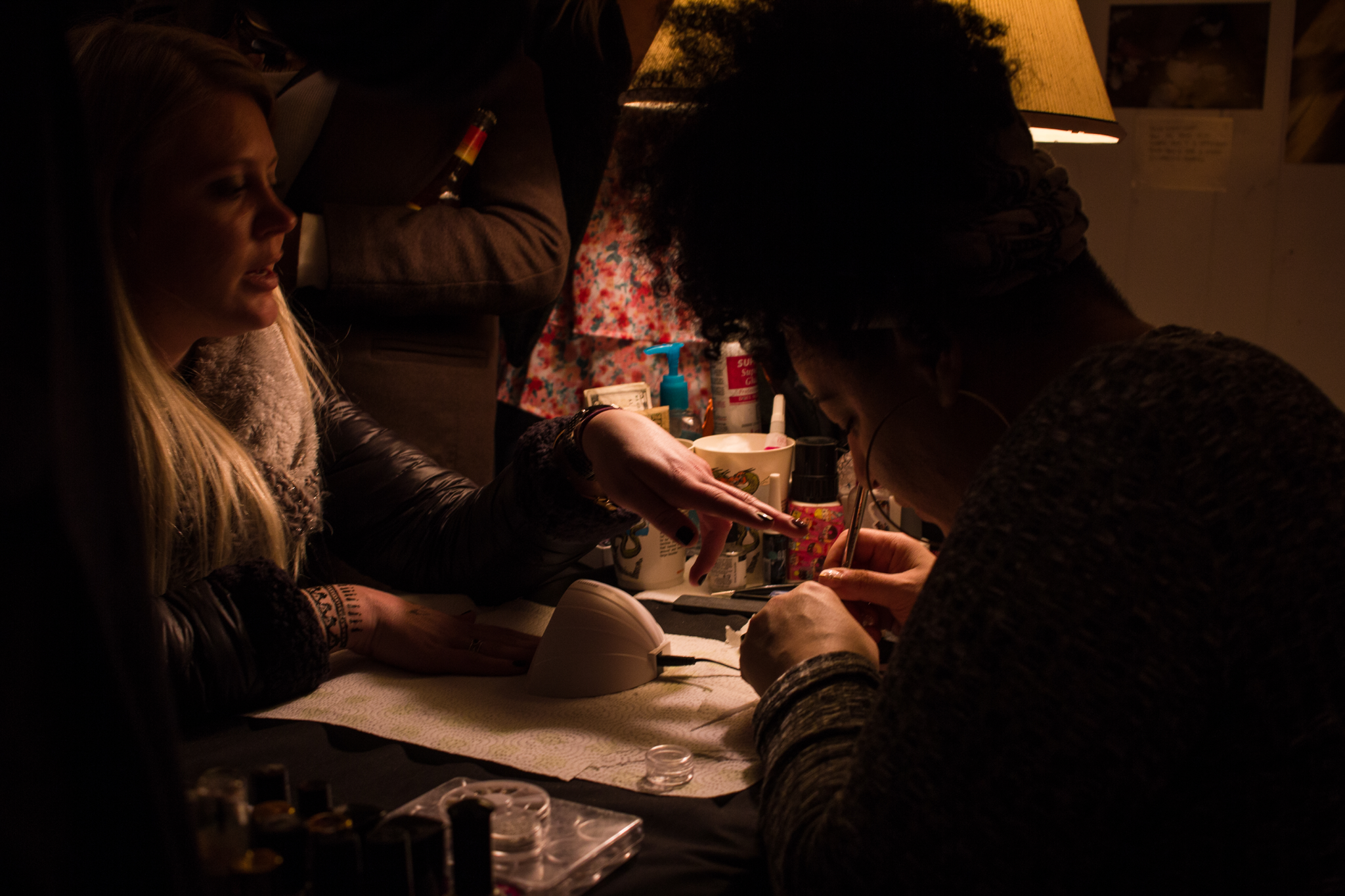
As the Dojo continues to grow, it’s likely that many of its beliefs about community will be tested. “In its DNA, [the Dojo] feels a little more expansive than a typical DIY space,” Deville says, but will still have to maintain the delicate balances that other DIY-style venues do.
The venue takes the DIY model and slightly systematizes it, but with benefits: it intends to create a safer, more positive, and more productive experience for artists and others. The venue is already hosting the next DIY town hall meeting, a gathering of representatives from venues across the city. If it continues to toe the line between being a professional institution and being an artistic community, it has the potential to make waves in Chicago, and to expand what curation can do.

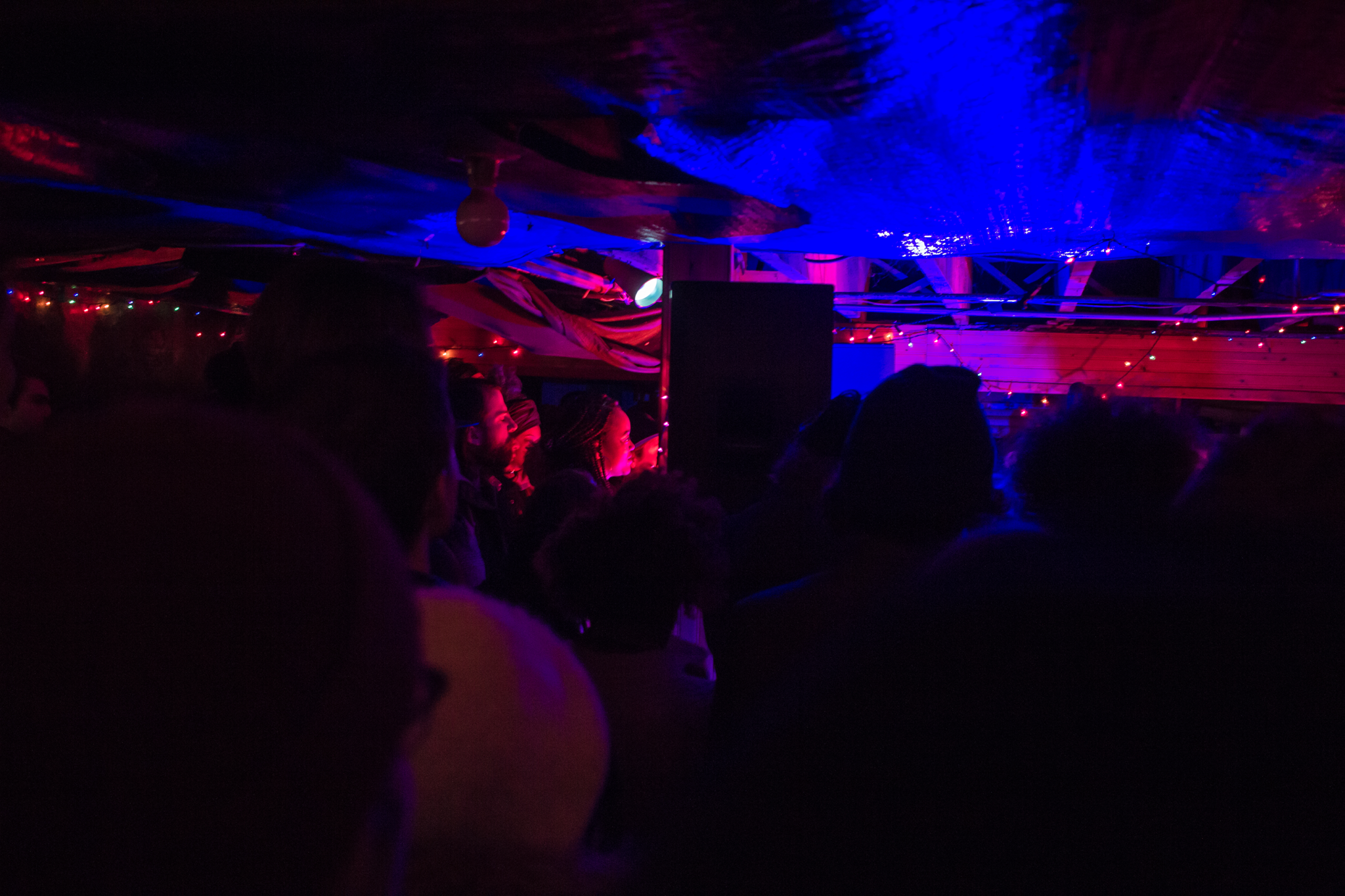
THE DOJO CHANGED MY LIFE BLESS YALL
Yo I want to go to the dojo, how do I get the details ??